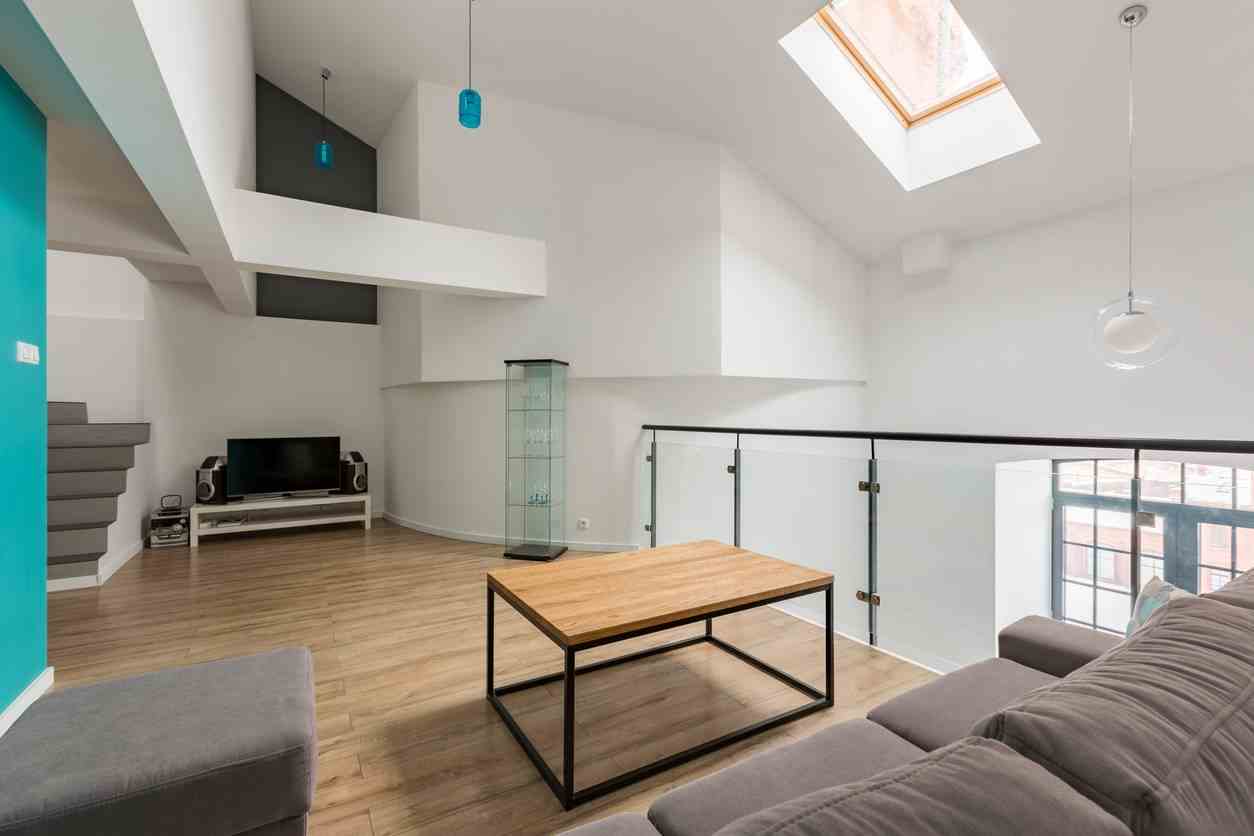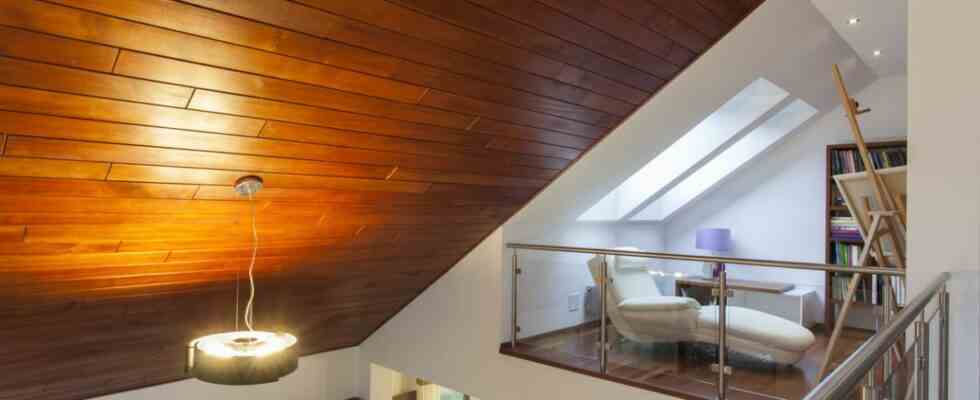The specificities of glass and aluminum railings
The glass railing is first known for its minimalist side. It creates a refined atmosphere that encourages calm and tranquility. By choosing a bespoke glass railing for your mezzanine, you will have the ability to create an original design thanks to the addition of other materials such as wood or stainless steel. To combine safety with aesthetics, you can opt for a colored glass railing.
Many other models with different features are available on the market to meet everyone’s expectations. You will therefore find opaque models, specially designed to preserve a certain intimacy, or classic models which retain the normal transparency of glass.
For the installation of a mezzanine railing, tempered glass is undoubtedly one of the most widely used types of glazing. Its name is due to the tempering process to which it was subjected during its manufacture. It has a single layer of glass that has been treated at a temperature of nearly 600° before being instantly cooled. It is this technique that optimizes its mechanical properties and makes it approximately four times stronger than conventional glass.

Among the different types of glazing that are usually involved in the installation of a mezzanine railing is also laminated glass. It is composed of two layers of glass of a substantial thickness which are separated by a few films of polyvinyl butyral (PVB) of about 1.52 mm each. These PVB films give the laminated glass better resistance and allow the panels to remain fixed in the event of a possible impact.
Another type of glass intended for the design of the railing for mezzanine exists under the name of ” laminated-tempered glass “. It combines the particularities of the two main forms of glazing and represents the most sensible option for securing a mezzanine over the long term.
Like the glass railing, the aluminum railing also has its specificities which make it an ideal solution to make a mezzanine safer. Railings designed with aluminum generally undergo an anodizing treatment which makes them more resistant to wear, heat and corrosion. They are therefore suitable for daily use. In addition to all its particularities, the aluminum railing has a trendy and timeless design which perpetuates its beauty.
Choose the structure of your railing
To select the ideal structure for your mezzanine railing, you must refer in particular to the style that you would like the work to reflect. For a modern design, we advise you, for example, to bet on an aluminum structure. This material, which combines solidity and durability, will bring a contemporary atmosphere to your mezzanine space.
If you do not have too much time to devote to cleaning the railing, then you will need to favor a structure that does not require regular maintenance. For a frequently used mezzanine, it is advisable to opt for a structure robust enough to withstand daily use.
If the mezzanine is located in an outdoor space, you will need to choose a structure for the railing that can withstand the weather. Regardless of the location of the mezzanine, the structure of the railing must be easy to install. It must also comply with the safety standards required for this type of work and must be able to be carried out at a single cost adapted to your specifications.
The standards and safety of a guardrail
The installation of any platform located at a certain height above the ground is subject to strict safety criteria. With regard to guardrails fitted with bars, it is recommended to respect a specific gap to prevent children from sticking their heads out by the bars or slip through. For railings with horizontal bars, the spacing required between each bar is 5 cm maximum. Railings with vertical bars must respect a gap of at least 11 cm.

A few years ago, new regulations were introduced for the level of pressure resistance that guardrails must comply with. This standard requires that a guardrail located in a private place must withstand a force of 60 Newton per linear meter. This threshold is set at 100 Newton per linear meter if the guardrail is installed in a public place.
It is important to note that compliance with the pressure resistance standard can only be declared following a test report carried out by an accredited inspection body. In the event of non-compliance with safety regulations, the responsibility for an accident will be assigned to the person who installed the guardrail.
How to maintain your glass railing?
To make the aesthetics and solidity of your glass railing last as long as possible, it is necessary to maintain the structure regularly. To clean the fog or dust residue on the glass, you can use glycerin or opt for water mixed with a neutral detergent product. If the dirt is too stubborn, you can use a low alkalinity detergent. Oil splatters or grease stains can be easily cleaned with rubbing alcohol.
It is important to wet the surface of the railing before starting the cleaning, in order to avoid scratching the glass panels. The cloth used must have a smooth and soft texture, so as not to risk scratching the surface. You can use a squeegee to reach areas of the railing that are difficult to access. After carrying out an initial cleaning with the product of your choice, you will now need polish the glass panels to finish the job.

